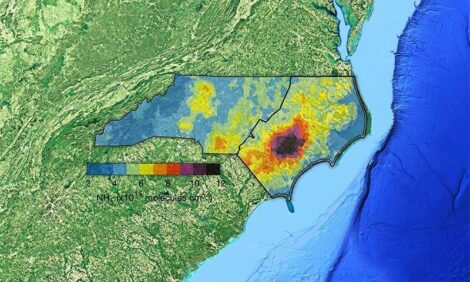



Top 10 cost cutters and revenue generators – Part I
By Lee Whittington, John Patience, Ruurd Zijlstra, Ken Engele, and Shala Christianson and published by Prairie Swine Center. Lowering your cost of production and increasing revenues is more than just good business; for many producers this is the key to surviving the current market situation. Ideally, all farms are using many of the following ideas, but if not, now is the time to revisit this list and see if there are hidden profits waiting to be discovered.
The following list focuses on changes, which can be implemented and monitored easily and inexpensively. In most cases, we have estimated the effect in terms of dollars per pig marketed.
The ideal feed formulation is dependent on animal weight and performance as well as cost of ingredients. The main driver to determining the frequency of diet reformulation is ingredient prices. When prices are rising and falling diets need to be changed more often. In volatile markets that could mean weekly, but for most producers this exercise is done each month, or whenever a major ingredient changes in price or availability.
An example of the effect of diet reformulation on cost of production is seen in Table1 comparing a diet formulated on April markets but still in use in December. Those same specifications when reformulated using December prices produced a much different cost per tonne and reduced the cost per pig by $2.33 without changing performance.
These example diets reflect only one farm’s pricing scenario and are greatly affected by local availability and any forward contracting of ingredients. Major changes in ingredient prices that have affected most producers include the increase of approx. $100/tonne in soy prices in December, resulting in this farm’s diets using more canola meal in grower and finisher diets. Experience suggests that regular reformulation of diets can reduce feed costs by $2-$4/pig sold.

Optimizing the use of ingredients like peas, lentils, and canola can reduce the cost of production in some commodity markets. Before incorporating any new ingredient pork producers recognize that real hurdles exist such as available bin space, and local availability of seed cleaning byproducts.
Usage rates will determine the value of any ingredient, one producer saved over $1.00 per pig by allowing grower diets to use up to 7.5% canola and finisher diets up to 10%. Pea usage up to approximately 30% of the diet is feasible. The net value of this tip will vary widely depending on the pricing and availability of alternative ingredients.
Selecting ingredients for their nutritional content not their bushel weight has been clearly defined as a significant way to ensure performance when considering distressed and other ‘low quality grains’. Barley and various classes of wheat have been thoroughly examined for their dietary energy content and feed intake effect.
Studies have shown that on average, a 1% rise in ADF (acid detergent fibre) results in a 93 kcal (3%) fall in DE (digestible energy) in barley. To make use of this information a pork producer needs to take representative samples of the grains they plan to use for the coming months and send these to the lab for protein, and either acid detergent fibre (ADF) for barley or neutral detergent fibre (NDF) for wheat.
The level of savings will be dependent on having access to grains that provide energy in excess of their current market value (such as distressed grains), or improved confidence in a wider variety of ingredients such as the recent work on wheat which demonstrates all of the common wheat varieties provide similar energy values to pigs. (Annual Research Report 2001, pg 22)
Using phytase in starter and grower rations allows requirements to be met while reducing dependence on mineral phosphorus sources. The level of phytase usage varies depending on the concentration of the product selected, recent work supports that 250 FTU/kg of phytase added to diets of growing pigs maintained performance compared to diets without phytase.
Until recently, most if not all practical grower and finisher diets as well as sow diets were bringing Phytase into the Least Cost Formulation. Dropping grain prices have challenged last year’s economics in this area. More information on phytase can be found in Centred on Swine Vol 10, No 3, Fall 2003.
Current marketing grids dictate that ‘eyeballing’ market weight isn’t going to generate the maximum revenues. But what methods are available to balance workload and hitting the core? Knowing growth rates near market by weighing groups of pigs leading up to market allows you to use a system of weighing every two weeks. This method requires you weigh all pigs at the first shipping day.
All pigs in the correct weight are shipped that day, but by knowing the typical ADG, you can project forward one week and mark those pigs with a distinct colour that will be ready next week, and different from the colour markings on the pigs to be shipped this week. There are herds that have improved their ability to market only 70% in the core and increase this to 90%+ using this method. The result is approximately $3.50 per hog at $1.10/kg market prices and $160/tonne finisher feed pricing.
Further Information
To read Part II please click here
Source - Prairie Swine Centre - March 2004






